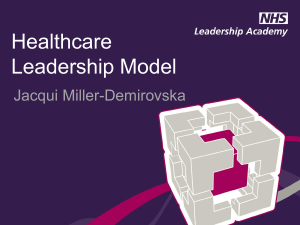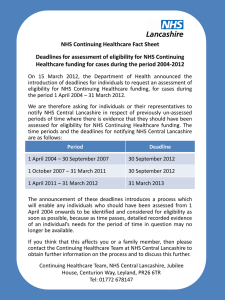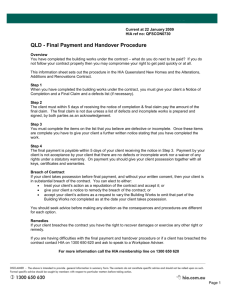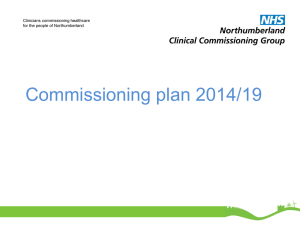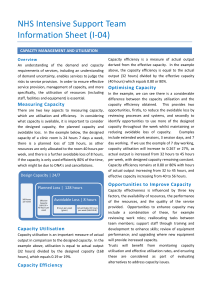HIA and Digital Health Services
advertisement
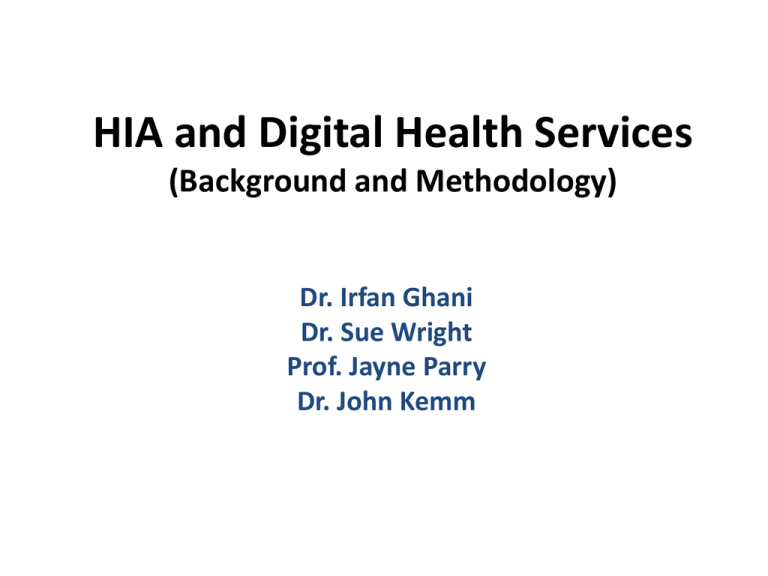
HIA and Digital Health Services (Background and Methodology) Dr. Irfan Ghani Dr. Sue Wright Prof. Jayne Parry Dr. John Kemm Digital Health Services • Recent developments in information technology has revolutionised provision of healthcare • A range of health related resources are available around the clock through a variety of digital media. • Digital exclusion raises the issue of health inequalities and the potential impacts of digital technologies on population health UK –POLICY CONTEXT Equity and Excellence: Liberating the NHS (Department of Health) •NHS information revolution... •Provide people access to comprehensive, trustworthy and easy to understand information from a range of sources on conditions, treatments, lifestyle choices and how to look after their own and their family’s health. •Patients need and should have far more information and data on all aspects of healthcare, to enable them to share in decisions made about their care and find out much more easily about services that are available……… No decision about me without me •Empower and liberate clinicians to innovate, with the freedom to focus on improving healthcare services HIA- Digital Health Service • Commissioned by the Regional Strategic Health Authority • Delivered by a consortium • An ecosystem providing a range of information and resources for NHS staff, patients and the public. • Delivers the content through a range of media including written reports, video clips, diaries, blogs, online training, case studies, interactive tools (including mapping). Aims of the Service • To improve health outcomes and health care delivery for patients and the public • To empower patients and the public to make informed choices about their health • To support health professionals in delivering safe, high quality, innovative healthcare services and developing their career. Community Profile • 5.4 million population (Higher South Asian Population than the National level) • Deprivation, child poverty, homelessness and GCSE achievement are all worse than the England average. • The deprivation varies across the region, with high levels of deprivation in the urban areas. Health Profile • The life expectancy is significantly worse in region than national averages • Highest infant death rate of the English regions. • % of adults and children who are obese is higher than the national average • Significantly fewer adults are physically active and eating healthy than nationally HIA Questions • Impact on the health of people • Impact on health equalities HIA Methodology Focusing ….on three groups •Health care professionals •Patients/ carers •Public …..One condition, diabetes •Significant health issue for the Region •Significance for the above 3 groups ACCESS ACT ON INFORMATION HEALTH CARE STAFF Up to date information on conditions & procedures Digital Health Service Training and sharing of best Practice/ innovations) Platform for creating online communities of practice for staff groups PATIENTS/ CARERS Continuing Professional Development Information on health Services (signposting, access) Digital Health Service Platform for creating online communities to share experiences Information on health conditions PUBLIC Information on Services (signposting, access) Digital Health Service Platform for creating online communities to share experiences Information on lifestyle Improved and Efficient Clinical Practice Culture of innovation Reduced Training Costs Empowered Staff OUTCOMES Improved health outcomes for patients Efficient utilisation of the NHS resources Efficient utilisation of health services Improved health outcomes for patients Make informed choices about Health Efficient utilisation of the NHS resources Efficient utilisation of health services Improved health outcomes for population Healthier lifestyle choices Efficient utilisation of the NHS resources HIA METHODOLOGY • Literature Review • Stakeholders Interviews • Survey of Service Users Literature Review • Assess the evidence of the potential impacts of the service on population health and health inequalities • Assess each links in the causal pathways for each of the three groups (public, patients and professionals) in relation to diabetes by looking for evidence to support these or refute these and to gain some insight into the size of the impacts. Limitations: Literature Review •Various methodological limitations •No reviews available on information / education on internet only •A great deal of variability in results •Concerns regarding the generalisability of the results •Lack of studies showing long term effects •Access to the internet and use of digital technologies are increasing and with this comes a cultural change in acceptance, use and perceived benefits. There will always be a time lag between publication of the literature and access and use of digital technologies. Stakeholders Interview Survey Of Service Users • Undertaking survey at the local Diabetic voluntary groups • Reviewing the key results of the survey carried out by the Commissioners Progress • Literature Review, Stakeholders Interviews and Surveys of users concluded • Currently undertaking appraisal of the impacts Reflections • The project was already under progress but still developing… • An ecosystem with aims and objectives evolving ..

